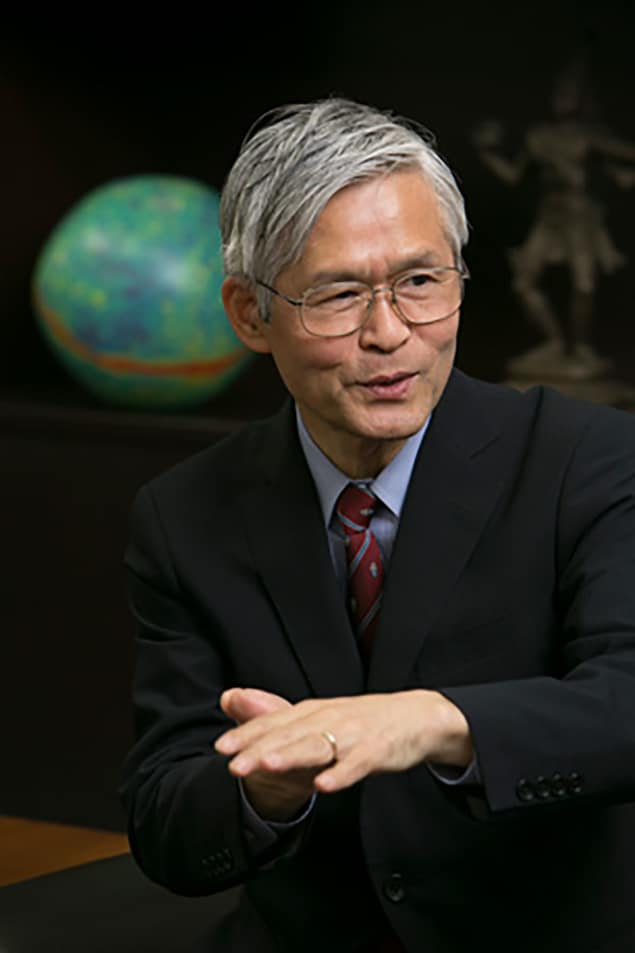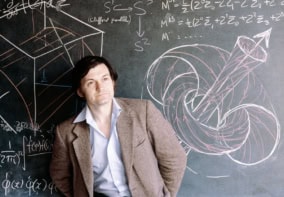Physicist Katsuhiko Sato from the University of Tokyo talks to Graham Jones about his work on inflation and the future of physics in Japan

Your first paper was with the physics Nobel laureate Hans Bethe. How did that come about?
Yes, it was my very first paper and was published in 1970 when I was still a graduate student at Kyoto University (Astronomy and Astrophysics 7 279). Bethe stayed in Kyoto for around four months and I was very fortunate to work with him at that time on the melting of nuclei in neutron stars. Bethe always explained things very kindly, using easy words. During this time I realized what a great physicist he was. It was a great start to my career.
You worked on the early universe next. What was interesting about this?
In 1979 I was invited to the Nordic Institute for Theoretical Atomic Physics in Copenhagen for a year to work on supernova explosions. At that time I was becoming more interested in cosmology, in particular what effects phase transitions had in the early universe. I found that cosmic expansion becomes exponential, and this is what we call inflation.
At the same time, physicists Alan Guth and Alexei Starobinsky independently came up with inflation and the theory had an immediate impact. What was it like watching the idea take hold?
It is very natural for scientists to come up with the same idea at the same time. Researchers read articles from around the world and from this, new ideas are born. What surprised me regarding inflation theory is that today many scientists are still working on new types of inflation. Alan Guth and I proposed inflation as a result of grand unified theories, but it was found there are some difficulties with this model. Now many types of inflation are proposed from various other points of view such as superstring theory. In that sense, the situation is a little complicated and confusing.
What did you think when you first heard that BICEP2 had detected signatures of inflation in the cosmic microwave background, only for it to be later disproved?
When I first heard the news, I was very pleased. I told Japanese newspaper and television reporters that this was a historic discovery. But when I learned that this important result for inflation theory had disappeared I was very sad. So now I’m greatly looking forward to a Japanese-led satellite mission called LiteBIRD, which has just been approved by the Japanese government. It involves people from NASA and the European Space Agency and will be 100 times more sensitive than BICEP2. This kind of co-operation is becoming stronger and stronger and is very important.
What surprised me is that many scientists are still working on new types of inflation
In the 1990s you switched into science administration, including two stints as president of the Physical Society of Japan. What attracted you to make this move?
Theoretical physicists usually make their contributions when they are young. I was getting old and felt that to continue making a contribution to science and Japanese society, I should move into science administration. At least then my research position could be used by an early-career scientist.
You’ve just stepped down as director of the Research Centre for Science Systems at the Japan Society for the Promotion of Science – a position you held since 2016. What does the research centre do?
Our primary mission is to advise the government on scientific research funding. Our secondary mission is to select scientists to review applications from researchers for competitive grants. There are approximately 100,000 applications each year and we have about 7000 reviewers. These are huge numbers. Although I stepped down as director at the end of March, I am staying on as a consultant.
Do you think the International Linear Collider (ILC) should be built in Japan?
I think the ILC should be built. Not only could the ILC produce large quantities of Higgs bosons, but the signal should be very clean. However, it is difficult for the ILC to be approved by the Japanese government as the total construction cost is estimated at more than 800 billion yen ($7bn). Of course, we will make many efforts to help the government understand the long-term scientific significance of this project.
How important is it that physicists communicate with the public to get their support for big projects like the ILC?
This is a very important role for scientists. Government support for science comes from people’s taxes so we must tell people about the results and achievements of science, and we must make it interesting. The Subaru Telescope in Hawaii is a good example. It has been very successful when communicating its results to the public and Japanese society has shown great support for this project.
Are you confident that Japan’s rich history in physics will continue?
The Japanese science budget has been decreasing for a number of years, which has been challenging for Japan’s academic community. On the other hand, although government support for universities has been hurt by cuts, the money given directly to researchers through competitive grants is actually increasing. So it is not easy – scientists must make great efforts – but we should still have hope for Japanese science.



